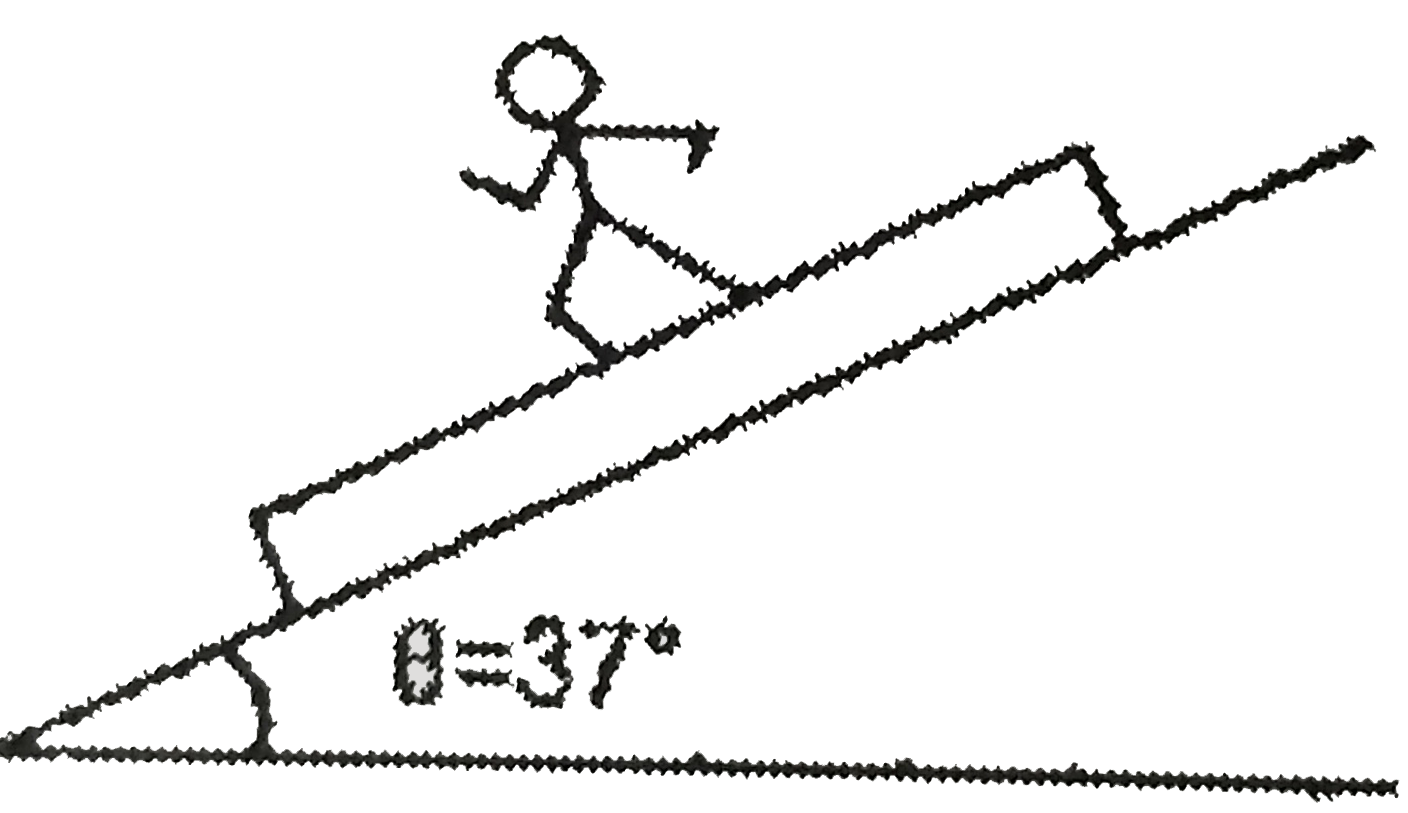A block of mass m is placed on a rough inclined plane of inclination kept on the floor of the lift. The coefficient of friction between the block and the inclined plane is . With what acceleration will the block slide down the inclined plane when the lift falls freely ?
Zero
None of these
The correct Answer is:A
To solve the problem, we need to analyze the forces acting on the block when the lift is in free fall.
1. Understanding the Situation:
When the lift falls freely, it accelerates downwards with an acceleration equal to g (acceleration due to gravity). In this scenario, the block inside the lift will also experience this acceleration.
2. Identifying Forces:
The forces acting on the block are:
- The gravitational force acting downwards, Fg=mg.
- The normal force N exerted by the inclined plane on the block.
- The frictional force Ff which opposes the motion of the block down the incline.
3. Analyzing the Normal Force:
In the frame of the lift, the block is in free fall, so it experiences a condition of weightlessness. This means that the normal force N acting on the block becomes zero:
N=0
4. Frictional Force Calculation:
Since the normal force is zero, the frictional force, which is given by Ff=μN, also becomes:
Ff=μ⋅0=0
5. Net Force Acting on the Block:
The only force acting on the block is its weight component along the incline. The component of the gravitational force acting down the incline can be calculated as:
Fdown the incline=mgsin(θ)
6. Applying Newton's Second Law:
Since there are no opposing forces (friction is zero), the net force acting on the block is equal to the gravitational force component down the incline. Therefore, we can write:
Fnet=ma=mgsin(θ)
Here, a is the acceleration of the block down the incline.
7. Solving for Acceleration:
We can simplify the equation:
ma=mgsin(θ)
Dividing both sides by m (assuming m≠0):
a=gsin(θ)
Final Answer:
The acceleration of the block sliding down the inclined plane when the lift falls freely is:
a=gsin(θ)
When the lift falls freely, it accelerates downwards with an acceleration equal to g (acceleration due to gravity). In this scenario, the block inside the lift will also experience this acceleration.
The forces acting on the block are:
- The gravitational force acting downwards, Fg=mg.
- The normal force N exerted by the inclined plane on the block.
- The frictional force Ff which opposes the motion of the block down the incline.
In the frame of the lift, the block is in free fall, so it experiences a condition of weightlessness. This means that the normal force N acting on the block becomes zero:
N=0
Since the normal force is zero, the frictional force, which is given by Ff=μN, also becomes:
Ff=μ⋅0=0
The only force acting on the block is its weight component along the incline. The component of the gravitational force acting down the incline can be calculated as:
Fdown the incline=mgsin(θ)
Since there are no opposing forces (friction is zero), the net force acting on the block is equal to the gravitational force component down the incline. Therefore, we can write:
Fnet=ma=mgsin(θ)
Here, a is the acceleration of the block down the incline.
We can simplify the equation:
ma=mgsin(θ)
Dividing both sides by m (assuming m≠0):
a=gsin(θ)
The acceleration of the block sliding down the inclined plane when the lift falls freely is:
a=gsin(θ)
Topper's Solved these Questions
Similar Questions
A block of mass m is at rest on a rough inclined plane of angle of inclination θ. If coefficient of friction between the block and the inclined plane is μ, then the minimum value of force along the plane required to move the block on the plane is
View SolutionA block of mas m begins to slide down on an inclined plane of inclination θ. The force of friction will be
View Solution
Knowledge Check
A block can slide on a smooth inclined plane of inclination θ kept on the floor of a lift. When the lift is descending with a retardation a , the acceleration of the block relative to the incline is
AThe acceleration of block relative to inclined is (g−a)sinθBThe normal force on block by the incline is m(g+a)cosθCThe acceleration of block relative to ground is gDThe acceleration of block relative to incline is (g+a)sinθA block of mass m slides down an inclined plane of inclination θ with uniform speed. The coefficient of friction between the block and the plane is μ. The contact force between the block and the plane is
AmgBmgsinθ√1+μ2CmgsinθD√(mgsinθ)2+(μmgcosθ)2A block of mass m is placed on a smooth inclined plane of inclination θ with the horizontal. The force exerted by the plane on the block has a magnitude
AmgBmgcosθCmgcosθDmgtanθ
A plank of mass 3m is placed on a rough inclined plane and a man of mass m walks down the board. If the coefficient of friction between the board and inclined plane is μ=0.5, the minimum acceleration of does not slide is:

View SolutionA block of mass m is placed at rest on an inclination θ to the horizontal.If the coefficient of friction between the block and the plane is μ, then the total force the inclined plane exerts on the block is
View SolutionA block of mass m slides down an inclined plane of inclination θ with uniform speed The coefficient of friction between the block and the plane is μ. The contact force between the block and the plane is .
View SolutionA block of mass m slides down a rough inclined plane of inclination θ with horizontal with zero initial velocity. The coefficient of friction between the block and the plane is μ with θ>tan−1(μ). Rate of work done by the force of friction at time t is
View SolutionA solid cylinder of mass m and radius r is rolling on a rough inclined plane of inclination θ. The coefficient of friction between the cylinder and incline is μ. Then.
View Solution
